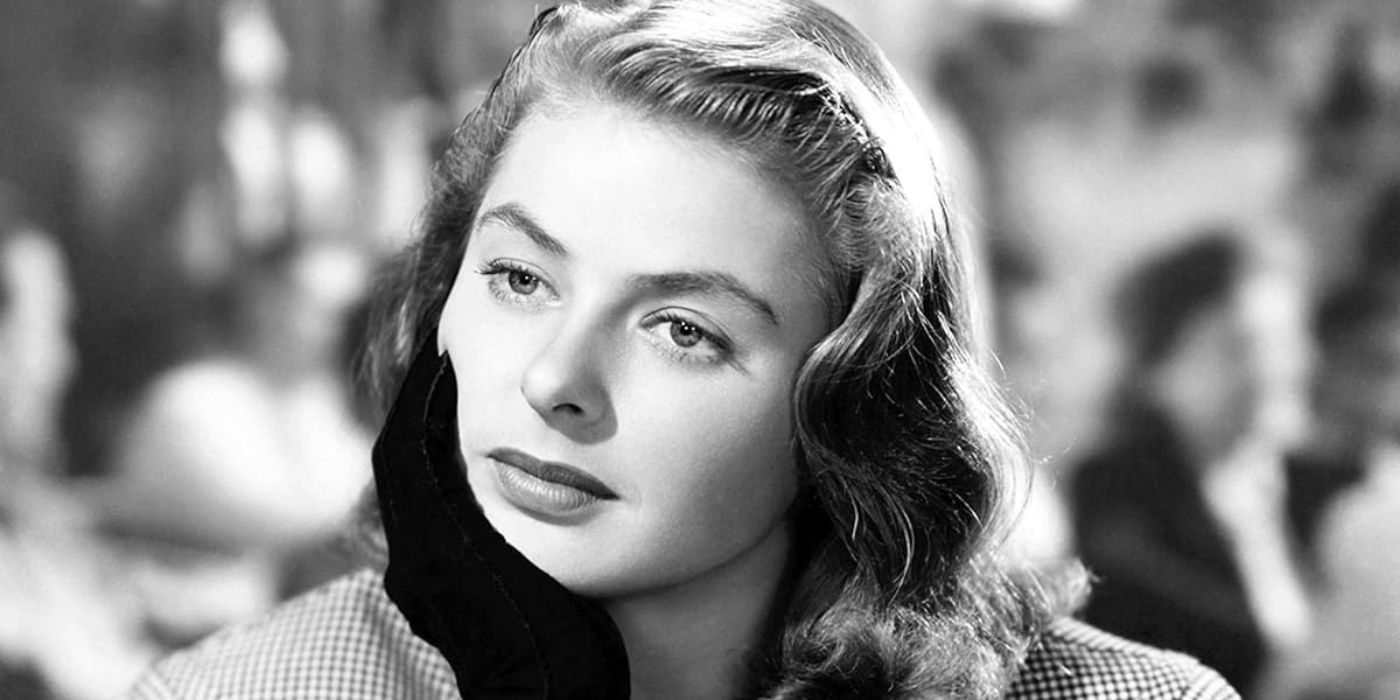When one hears the phrase “The Golden Age of Hollywood,” endless images tend to come to mind. From unforgettable movies to glamorous stars, the era remains the greatest in movie history. While actresses such as Joan Crawford and Grace Kelly personified the glamour of the era, performers such as Bette Davis built their careers on defying convention, but then, there’s Ingrid Bergman. Still one of the most beloved actresses of all time, Berman made a huge impression when she began working in American cinema, thanks to her natural beauty and undeniable talent. Working across genres, Bergman gave perhaps her greatest performance in Casablanca, a film that, for many, remains one of the greatest achievements in the history of filmmaking.
However, as many remember her talent with great nostalgia, they often overlook her unjust isolation from Hollywood thanks to occurrences while making the film, Stromboli. While a gorgeous example of Italian Neorealism, the movie kicked off a string of events that would see Bergman effectively made unable to work in movies for years, while her male counterparts did not face the same problem. What’s more, Bergman’s downfall was more the result of the public persona Hollywood had crafted for her, rather than who she really was.
Ingrid Bergman Didn’t Conform to the Hollywood Studio System
From the time she arrived in Hollywood, Ingrid Bergman seemed destined to stand apart from the rest of Hollywood. Like Bette Davis before her, Bergman famously refused to follow in the footsteps of the “glamorous” performers of the era. As Vogue states, Bergman had been brought to American cinema by David O. Selznick to remake the film Intermezzo, a picture she had previously starred in while working in Sweden. Like many leaders of the studio system, Selznick wanted to give Bergman a full make-over, which included changing her eyebrows and capping her teeth. Berman, however, refused. After some back and forth, Selznick finally came around and agreed to lean into Bergman’s natural beauty.

Related
10 Essential Ingrid Bergman Movies, Ranked
We’ll always have Paris, Ingrid.
As a result, Bergman often played “girl next door” roles, which helped shape her image. Her characters were often perceived as wholesome and, in some cases, near angelic. One need look no further than two of her most iconic roles: Sister Mary Benedict in The Bells of Saint Mary and the titular Joan of Arc. She became associated with the persona “Saint Ingrid,” and it’s not hard to see why. She’s absolutely brilliant in these (and frankly all) of her roles. However, when she went to Italy to star in Stromboli, controversy imposed a new identity on the actress.
Bergman’s Affair on ‘Stromboli’ Led to Hollywood Exiling Her
Ingrid Bergman’s effect on Hollywood can’t be understated. After all, she is still considered one of the finest actresses of all time. However, as documentarian Isabel Custodio states, her transition to Italian films would prove treacherous. Bergman went to Italy to work with the renowned director, Roberto Rossellini. While working on Stromboli, the two fell in love. There was only one problem: both were already married, Bergman to Petter Lindstrom and Rossellini to the actress, Anna Magnani. What’s more is that Bergman became pregnant, a scandal that rocked the then-strictly conservative Hollywood. One needs to look no further than Tinseltown’s Hays Code to understand how the industry functioned. Thus, Bergman’s pregnancy was immediately controversial. However, it was taken to extremes, the likes of which it’s hard to imagine today. As History.com reflects, the issue even became political when U.S. Senator Edwin C. “Big Ed” Johnson of Colorado launched a verbal attack against Bergman, saying: “one of the most powerful women on Earth—I regret to say, a powerful influence for evil.” The Catholic Church also condemned Bergman, which only led to the polemic.
As a result, Bergman was ostracized from working in Hollywood. Stromboli’s distribution in the U.S. struggled as a direct result of the affair (per Custodio), and Bergman herself was not cast in any films for about five years. It’s jarring, considering how beloved the actress was and still is today. But what adds insult to injury is the fact that Rossellini absolutely did not have this same problem. In fact, the director’s filmography only becomes more prolific during this period, with ten credits all occurring within this five-year period. Bergman did experience a huge comeback when she won an Oscar for her role in 1956’s Anastasia. However, when one reflects on her isolation, it’s jarring. Selznick would eventually express regret for painting her as “Saint Ingrid” and speculated that it was that image that led to Hollywood’s harsh treatment of her, according to Custodio. Regardless, Bergman will always be one of the greatest of the greats, and her survival and continued relevance serve as a happy ending, albeit to a controversy that never should have happened at all.



